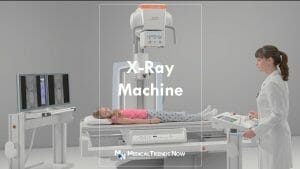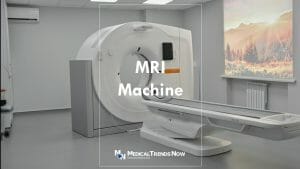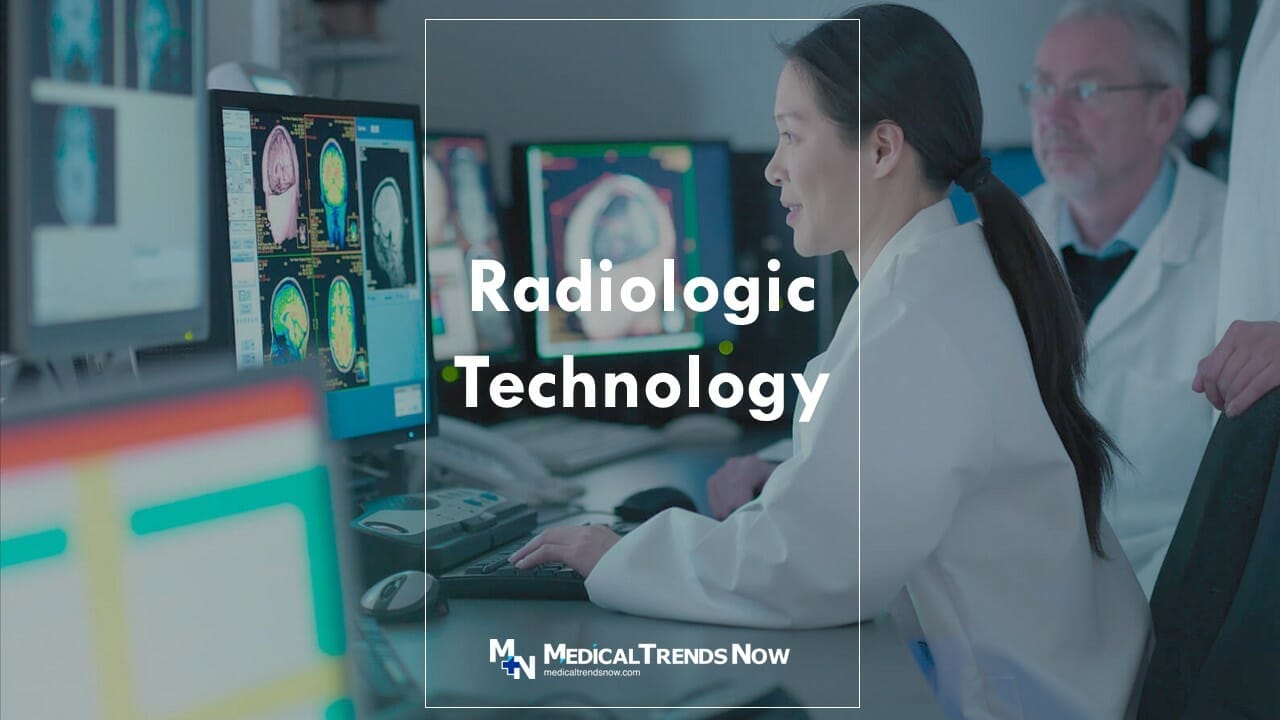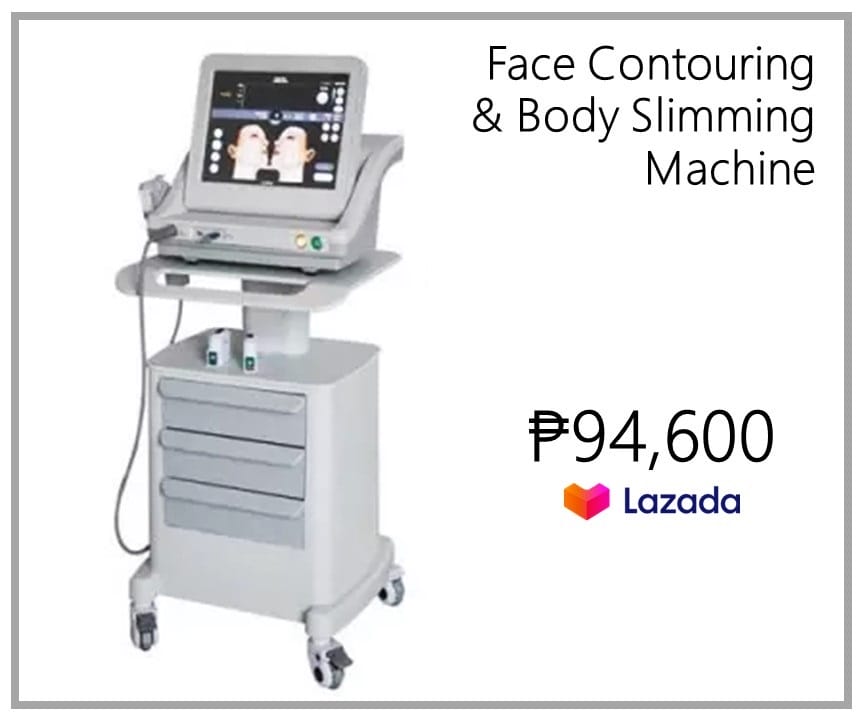Table of Contents
Radiologic technology in the Philippines is rapidly progressing due to the growth of the population. RadTech is a field of medicine that uses imaging to diagnose and treat diseases. It is constantly evolving, and new technologies are constantly being developed that can improve the quality of care for patients. This results in better diagnostic images and more effective treatments for patients. It helps doctors diagnose and treat patients by creating images of the inside of the body.
This article will discuss how radiologic technology in the Philippines is changing the face of medicine and how it can be used to improve patient outcomes. Here are just a few examples of how radiologic technology is changing the face of medicine.
What is Radiologic Technology?
Radiologic technology is a field of healthcare that uses imaging to diagnose and treat patients. Imaging modalities used in radiologic technology include X-ray, computed tomography (CT), magnetic resonance imaging (MRI), and ultrasound.
Radiologic technologists are trained to produce high-quality images using the modality best suited for each patient’s needs. They also work closely with radiologists—physicians who specialize in interpreting images—to ensure that diagnostic information is conveyed accurately.
The use of imaging has become increasingly important in recent years as it allows physicians to detect and treat conditions earlier than ever before. Radiologic technologists play a vital role in the delivery of high-quality healthcare, and the demand for their skills is expected to continue to grow in the years ahead.
Radiologic technology in the Philippines is growing rapidly. With the right training and education, you can be on your way to a successful career in this field. There are many opportunities for those who are interested in pursuing a career in radiologic technology. With the Ultimate Guide to Radiologic Technology in the Philippines, you will be able to learn everything you need to know about this exciting field.

The History of Radiologic Technology
Radiologic technology is a field that has a long and interesting history. It began with the discovery of X-rays in 1895 by Wilhelm Roentgen and has since evolved into a vital part of the medical field.
The history of radiologic technology is full of fascinating milestones. In 1895, Wilhelm Roentgen discovered X-rays, which led to the development of diagnostic radiology. In 1896, Marie Curie discovered radioactivity, which paved the way for therapeutic radiology. In the early 1900s, x-ray machines became more common in hospitals and clinics.
During World War I, radiologic technologists played an important role in treating soldiers who had been wounded in battle. They also assisted in the diagnosis of diseases such as tuberculosis and typhoid fever.
In the early 1900s, X-rays were used to examine skeletal structures and detect broken bones. The use of diagnostic radiography continued to expand over the years, and by 1921, American Roentgen Ray Society (ARRS) members had produced a set of standards for radiologic procedures. Over the next few decades, several other key developments occurred in the field of radiologic technology. Today, radiologic technologists use a variety of imaging modalities to help diagnose and treat patients.
If you are interested in the field of radiologic technology in the Philippines, this guide has provided all the information you need to get started. Radiologic technology is an essential part of the healthcare system and provides many opportunities for those who are interested in pursuing a career in this field. With the right training and certification, you can be on your way to a successful career in radiologic technology.

What are the Types of Machines that are Used in Radiologic Technology?
There are many types of machines that are used in the radiologic technology field. Some of the most common types of machines include:
- X-ray machines
- Computed tomography (CT) scanners
- And magnetic resonance imaging (MRI) machines.
- PET Scanners
- Ultrasound
- Mammography
Radiologic technology in the Philippines is an important integral part of any healthcare institution. There is a great demand for qualified radiologic technologists in the country. With the proper training and education, you can become a radiologic technologist in the Philippines. Here are the machines that you need to know if you want to become a RadTech professional.

X-Ray Machines
X-ray machines are an important part of the medical field. They allow doctors to see inside the human body and diagnose problems. X-ray machines use a type of radiation called x-rays to create images of the inside of the body. X-rays are a type of electromagnetic radiation, like light. They are made up of waves of energy that travel through the air at the speed of light.
When x-rays pass through the body, they are absorbed in different amounts by different tissues. Bones absorb more x-rays than soft tissues, so they show up as white on an x-ray image. Soft tissues absorb less x-rays, so they appear gray on an x-ray image. Air absorbs very little x-rays, so it appears black on an x-ray image.
Radiologic technology is a field that uses imaging to diagnose and treat diseases. There are many different types of machines that are used in this field, each with its own purpose.
One type of machine is an X-ray machine. This machine uses high-energy waves to create images of the inside of the body. X-rays are used to diagnose problems with bones, organs, and blood vessels.

Computed Tomography (CT) Scanners
Another type of machine is a CT scanner. This machine uses special software to take multiple pictures of the inside of the body.
CT scans are often used to diagnose diseases or injuries and to guide procedures such as surgery or biopsies. These pictures are then put together to create a three-dimensional image. CT scans are often used to diagnose problems with the brain or spine.

MRI Machines
MRI machines are fascinating pieces of technology that allow us to see inside the human body without having to make a single incision. But how do MRI machines work, and what are some of the things they can be used for?
Here’s a beginner’s guide to MRI machines:
MRI machines use strong magnetic fields and radio waves to create images of the inside of the body. The patient lies on a table that slides into the machine, and the machine captures images from different angles.
MRI machines can be used to diagnose problems with the brain, spine, and other organs. They can also be used to track the progress of diseases like cancer.
MRI machines are an important tool for doctors and patients alike.

PET Scanners
PET scanners are becoming increasingly popular in the world of radiology. Here’s everything you need to know about this cutting-edge technology.
A PET scanner is a machine that uses radiation to create images of the inside of your body. The images can show how well your organs are working and whether they have any problems.
A PET scan is usually combined with a CT scan or MRI to get more detailed information about a particular area of your body. This combination is often used to diagnose cancer, heart disease, and other conditions.

Ultrasound Machines
Ultrasound machines are one of the most essential pieces of equipment in the medical field. They allow doctors and other medical professionals to see inside the human body without having to make a large incision.
Ultrasound machines have been used for decades, and they continue to be one of the most important tools that doctors have at their disposal. Here is everything you need to know about ultrasound machines and how they work.

Mammography
Mammography is an imaging test that uses low-dose x-rays to examine the breasts. The test is used to screen for breast cancer, as well as to diagnose and to stage of the disease.
Mammography is generally recommended for women over the age of 40, as well as women with certain risk factors for breast cancer. The American Cancer Society recommends that women have a mammogram every year.
The test itself is quick and relatively painless and can be performed at a doctor’s office or outpatient center. Results are typically available within a few days.

How do I Become a Radiologic Technologist in the Philippines?
Radiologic technologists are in high demand in the Philippines due to the increasing use of diagnostic imaging procedures. The radiologic technologist is a vital member of the healthcare team who provides quality patient care by producing accurate and precise diagnostic images. There are several steps that must be taken in order to become a radiologic technologist in the Philippines.
First, it is important to obtain a bachelor’s degree in radiology from an accredited institution.
Next, pass the national licensure examination for radiologic technologists. Once you have obtained your license, you will need to register with the Philippine Registry of Radiologic Technologists.
Finally, you must complete a mandatory one-year clinical internship at an accredited hospital. After successfully completing these steps, you will be qualified to work as a radiologic technologist in the Philippines.
Radiologic technology in the Philippines is an important and interesting field of study. Students interested in pursuing a career in this area should consider studying at a school in the Philippines. There are many good schools to choose from, and the country has a lot to offer students in terms of experience and education.

What are the Educational Requirements for Becoming a Radiologic Technologist in the Philippines?
In the Philippines, a radiologic technologist is required to have completed at least four years of college education with courses in anatomy, physiology, and medical ethics. A bachelor’s degree in radiologic technology is also available but not required. After completing the educational requirements, radiologic technologists must pass a licensure exam before they can begin working.
Radiologic technologists are responsible for performing diagnostic imaging exams using x-ray equipment. They work closely with patients and physicians to ensure that images are of high quality and meet the diagnostic needs of the physician. Radiologic technologists must be able to maintain accurate patient records and follow all safety protocols when operating x-ray equipment.
If you want to pursue a career in radiologic technology in the Philippines, you need to complete an accredited four-year radiologic technology course at a reputable university. Afterward, you must pass the licensure examination given by the Board of Radiologic Technology. Once you have your license, you can apply for a job at a hospital, clinic, or other healthcare facilities.

How Much is the Salary of a Radiologic Technologist in the Philippines?
In the Philippines, the average salary for a radiologic technologist is about PHP 20,000 per month. However, salaries can range from PHP 15,000 to PHP 30,000 per month, depending on experience and location. For instance, those working in Manila tend to earn more than those working in rural areas.
Radiologic Technology in the Philippines is a vital profession that helps to diagnose and treat patients. The profession offers many opportunities for those who are interested in pursuing a career in this field. There are many schools that offer programs in RadTech, and the government is also working to improve the quality of education in this field.

What are the Different Types of Radiologic Technology in the Philippines?
Radiologic technology is a branch of medicine that uses imaging to diagnose and treat diseases. There are many different types of radiologic technology in the Philippines.
X-ray radiography is the most common type of radiologic technology. X-rays are used to create images of bones, organs, and tissues. X-rays can also be used to treat cancer.
CT scan is another type of radiologic technology. CT scans use x-rays to create detailed images of the body. CT scans can be used to diagnose cancer, heart disease, and other conditions.
MRI is a type of radiologic technology that uses magnetic fields and radio waves to create images of the body. MRI can be used to diagnose brain disorders, spinal cord injuries, and other conditions.

The Scope of Practice for Radiologic Technologists in the Philippines
In the Philippines, the scope of practice for radiologic technologists is quite limited. They are only allowed to perform X-rays and other diagnostic procedures on patients. They are not allowed to provide treatment or any kind of therapeutic procedure.
Radiologic technologists in the Philippines must have a valid license in order to practice. The license is issued by the Professional Regulation Commission (PRC). To be eligible for licensure, candidates must pass the Radiologic Technology Board Exam.
Once licensed, radiologic technologists can work in various settings, such as hospitals, clinics, and private laboratories. They may also choose to work in research or teaching institutions.
The scope of practice of radiologic technology in the Philippines is very broad. RadTech professionals are able to work in a variety of settings, including hospitals, clinics, and private practices. They are also able to perform a variety of procedures, such as X-rays, MRIs, and CT scans. This makes them an invaluable asset to the healthcare system in the Philippines.

What are the Risks Associated with Radiologic Technology?
Radiologic technology is the study and use of X-rays to diagnose and treat diseases. The risks associated with radiologic technology are low, but they include exposure to radiation and the potential for cancer.
Radiation exposure is the most significant risk associated with radiologic technology. Radiation exposure can cause DNA damage that can lead to cancer. The risk of developing cancer from radiation exposure is small, but it increases with the amount of exposure.
The other risks associated with radiologic technology are relatively rare and include allergic reactions to contrast material, electrical shock, and burns. These risks can be minimized by following safety guidelines and using protective equipment.
It is important to be aware of the risks associated with radiologic technology in the Philippines. While the risks are low, they are still present. By taking steps to reduce exposure and following safety guidelines, radiologic technologists can help to ensure the safety of themselves and their patients.

The Role of Radiologic Technologists in the Philippines
Radiologic technologists play an important role in the Philippines’ healthcare system. They are responsible for providing diagnostic imaging examinations using x-ray and other imaging modalities. Radiologic technologists work closely with radiologists, who are doctors who specialize in interpreting medical images.
In addition to diagnostic imaging, radiologic technologists also play an important role in interventional radiology procedures. Interventional radiology is a minimally invasive form of treatment that uses image guidance to treat conditions that were once only treated surgically. This type of procedure is becoming increasingly popular due to its potential to improve patient outcomes and reduce surgical risks.
The professionals of radiologic technology in the Philippines must complete an accredited training program and obtain a license from the Philippine Board of Radiologic Technology before they can practice. Those who wish to specialize in a particular area of radiology may complete additional training and certification.
Job Outlook and Career Options for Filipino Radiologic Technologists
In the Philippines, a radiologic technologist is a healthcare professional who uses imaging techniques to diagnose and treat patients. There are many career options for Filipino radiologic technologists, including working in hospitals, clinics, and private practices. The job outlook for Filipino radiologic technologists is positive, with many opportunities for advancement.
There are many career options available to Filipino radiologic technologists. They can work in hospitals, clinics, private practices, or research facilities. Many radiologic technologists choose to specialize in a particular area of medicine, such as pediatrics or oncology.
A career in radiologic technology in the Philippines is a stable and secure choice for Filipino healthcare workers. Job seekers can expect good job prospects and earn a comfortable salary. With the right training and certification, radiologic technologists can enjoy a long and rewarding career in this field.
How Radiologic Technology is Used in Medicine Today
Radiologic technology in the Philippines is used in medicine today in a variety of ways. One way is for diagnostic purposes, such as X-rays, computed tomography (CT) scans, and magnetic resonance imaging (MRI). These imaging modalities allow doctors to visualize the inside of the body without having to make an incision. Another way that radiologic technology is used in medicine today is for therapeutic purposes, such as treating cancer with radiation therapy or using interventional radiology to treat diseases.
Radiologic technologists are the professionals who use this technology to help patients. They must be able to operate the equipment properly and understand how to produce high-quality images. They also must be able to communicate with patients and explain the procedures clearly. Radiologic technologists play an important role in providing quality patient care.
New Innovations in Radiologic Technology
New innovations in radiologic technology in the Philippines are constantly being developed to make the field more efficient and effective. One such innovation is digital breast tomosynthesis, commonly known as 3D mammography. This type of mammogram provides a more detailed image of the breast, which can help to detect problems earlier. Another new development is called breast MRI elastography, which can be used to assess the stiffness of breast tissue. This information can be helpful in determining whether a mass is benign or malignant.
The Future of Radiologic Technology
Radiologic technology in the Philippines is always evolving. The future of radiologic technology is digital and three-dimensional. This means that images will be more realistic and easier to interpret. Radiologists will be able to see inside the body without making a single incision.
This technology is not only limited to X-rays. MRIs, CT scans, and even ultrasounds will be digitized. This will provide more accurate images and allow for better diagnosis and treatment of diseases. Patients will benefit from shorter wait times and less radiation exposure.
Radiologic technologists will need to be trained in new modalities as they arise. However, the basic principles of imaging will remain the same. Radiologic technologists will continue to play an important role in the diagnosis and treatment of patients with various medical conditions.
Takeaway: Radiologic Technology in the Philippines, An Ultimate Guide
In conclusion, Radiologic Technology in the Philippines is a great field to get into if you are looking for a career in the medical field. There is a lot of demand for radiologic technologists in the Philippines, and the pay is good. If you are interested in becoming a radiologic technologist, there are many schools that offer programs in the Philippines.
Anyone considering a career in Radiologic Technology in the Philippines will find this guide extremely helpful. It covers all of the basic information one needs to know in order to make an informed decision about whether or not this is the right field for them. Readers will come away from this article with a better understanding of what Radiologic Technologists do on a daily basis, what kind of training and education is required, and what the job market looks like in the Philippines.
Resources
- Radiologic Technology – Professional Regulation Commission
- Bachelor of Science in Radiologic Technology – Medical Colleges of Northern Philippines
- BS Radiologic Technology – Southville International School
- Radiologic technologist Jobs in Philippines, Job Vacancies – JobStreet
- PHILIPPINE ASSOCIATION OF RADIOLOGIC TECHNOLOGISTS INC. – Tourism Promotions Board Philippines
- Radiologic Technologist Salary in Philippines – PayScale
- Radiologic Technologist Average Salary in Philippines 2022 – Salary Explorer
- X-ray technician salary in Philippines – Indeed Philippines
- Radiologic Technologist Salary in Dipolog, Philippines – ERI
- DBM: Higher salary grades for public radio techs starting April 1 – Philippine Daily Inquirer
- What Does a Radiologic Technologist Do? An Inside Look at the Job – Rasmussen University
- Careers in Radiologic Technology – ASRT
- Radiologic Technologist | Center for Health Sciences Education – Cleveland Clinic
- A World of Career Opportunities in Radiologic Technology – Association for Medical Imaging Management
- What Does a Radiology Tech Do? | Role & Job Description – Herzing University
- Radiology | Harvard Medical School
- What is Radiology? – Ontario Association of Radiologists
- About radiology | Radiology | Services A-Z – Royal Free Hospital
- General Information on Radiology – Hopkins Radiology
Disclaimer
This website is intended to educate both members of the general public and those working in the medical field on the prevalence, causes, and methods for preventing, diagnosing, and treating diseases that affect people throughout their lives. This website’s content is provided solely for informational reasons and is not meant to serve as a substitute for the advice of a qualified medical practitioner.













